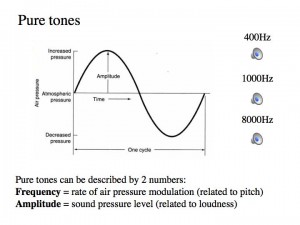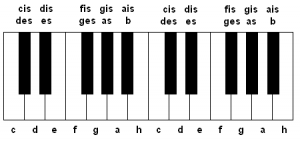Sound
Besides light, sound is the most important component of creation, but we perceive only a limited frequency range. Sound is an acoustic signal made up of waves that the human auditory system associates with pitch. The spectrum of musical sounds is influenced by periodic vibrations which consist of a single basic and multiple sub-vibrations, interacting harmonically with the basic vibration to form its so-called numerically complete multiplicity.
The psychological perception parameters of a sound are:
the pitch, which is largely determined by the frequency, f0, of the basic vibration,
the volume or sound strength, which is dependent primarily on the amplitude of the vibration and hence from the acoustic pressure of the transmission medium,
the timbre, which is determined by the number and the relationship between the amplitudes of the partial frequencies,
the frequency composition of the harmonic overtones of a sound is represented by means of the following symbols: f0.2 f0.3 f0.4 f0.5, etc., where f0 is always the basic frequency.
Acoustics
Acoustics refers fundamentally to the noise, that is, the quality of waves such as sound, tone or percussion, as they are perceived by people or animals. From a physical point of view, acoustic noise is the propagation from the smallest pressure and density variation in an elastic medium (gases, liquids and solids). Acoustics are also dependent on waves and always forms a longitudinal wave in the most important medium, air, as well as in gases and liquids at rest. Acoustic velocity therefore depends primarily on the propagation medium. In air at 20° C, it is about 343 m/s and in water at 0°, around 1,407 m/s.
The following distinctions are made according to the frequency or vibration range:
infrasound, which at 16 Hz is inaudible to humans,
audible sounds, from 16-20 Hz, which we can perceive,
ultrasound, from 20 Hz to 1 Ghz, a high frequency which is inaudible to humans,
hypersound, beginning at 1 Ghz, which dissipates into the ether and has a limited ability to propagate itself in waves.
Tone
Tones are formed from sound and transmitted via acoustic waves. In the musical scale, we distinguish eight basic tones and in the European scale, there are four half-tones between those, twelve tones in all, with the eighth being the first tone in the next octave.
In general, then, a scale of only pure or harmonic tones should be derived from a mixture of its own overtones (harmonics). If one considers a tone scale as a space in which music primarily moves, it describes the tone or sound material of the music in the space.
Tones Frequency/vibration
C 264 Hz
D 297 Hz
E 330 Hz
F 352 Hz
G 396 Hz
A 440 Hz
H 495 Hz
C 528 Hz
Note:
In acoustics (DIN 1320), a tone is always a “sinusoidal tone”, or a signal with a discrete frequency. Colloquially, the reference is often to a “violin tone”, although the signal generated by a vibrating string, because of its harmonic composition, is not a tone, but instead – as we have seen – a sound.
This is just a small excerpt from the book GAIA LEGACY.


